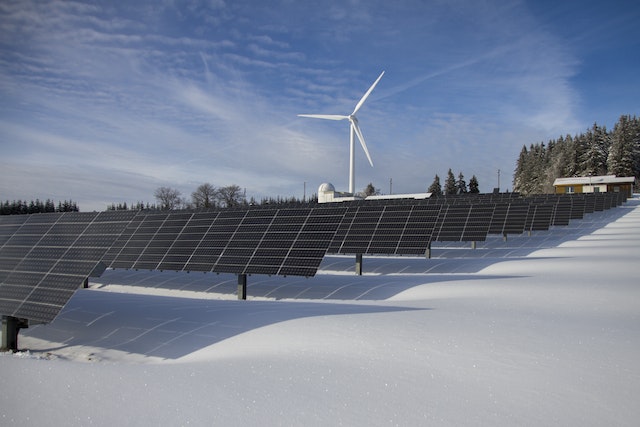How Renewable Energy is Revolutionizing the Energy Industry
Renewable energy sources like solar and wind are transforming the global energy market. As a result, there are more opportunities than ever to harness renewables at scale. Falling costs and innovation have driven the growth of renewables. As a result, solar and wind are cost-competitive with fossil fuel electricity.
Contents
Environment Friendly
Renewable energy is based on natural sources that are replenished faster than used. The most common are sunlight and wind power, but other sources include the sun’s heat, falling water, waves, ocean currents, and geothermal energy. The main advantage and importance of renewable energy are that it doesn’t create harmful greenhouse gas emissions, which are a major contributor to climate change. It’s also nine times cheaper than fossil fuels, essential to a greener, cleaner future. Many countries are turning to solar and wind as the primary sources of electricity. This is a good move because it allows them to reduce their dependence on coal, which causes dangerous emissions and contributes to global warming.
Another great innovation that’s allowing us to transition to clean, renewable energy is carbon capture and storage. This technology pulls carbon out of the air and turns it into a synthetic fuel that could power everything from heating to transport. This hugely exciting breakthrough makes it easier to generate clean electricity and improves our energy system’s efficiency. As more and more countries adopt this technology, we can harness the planet’s available wind and solar power. One of the essential steps to make our energy industry more sustainable is reducing our waste. Recycling as much as we can is a great place to start.
Big Data & Predictive Analysis
The energy industry is one of the largest sectors in the world. It has a lot of challenges to deal with, such as a constant influx of data and the need for continuous improvement. However, it can achieve this through the use of data analytics. With big data and predictive analysis, the renewable energy industry can improve its operational efficiency and increase profitability. By reducing waste and unnecessary costs in the production process, the cost of clean energy can drop significantly. This is because data science and analytics are increasingly being used to optimize the performance of wind farms, solar panels, and other energy sources. This is expected to result in 50% of all energy sources being powered by clean sources by 2050. Furthermore, using artificial intelligence and machine learning has allowed for better forecasting of renewable energy sources such as wind and solar power. This is especially important in areas where weather conditions are unpredictable.
Cost Effectiveness
The cost of renewable energy is rapidly declining, a phenomenon that has led to the rapid shift to a low-carbon electricity system across the globe. This is a great news story for those who want to build a clean energy economy that can help protect the world from volatile fossil fuel prices, mitigate climate disruptions, and deliver cleaner air and healthier water to the people that depend on it.
Fossil fuels have been a dominant energy source since the beginning of human civilization, but renewables are driving the change in our energy system. Solar, wind, and hydropower are all now competitive with fossil fuels for power generation, as they offer reliable, abundant, affordable, and sustainable power supply. As a result, we can expect to see a continued decline in the cost of renewables in our global market. This will continue to improve as renewable technologies’ competitiveness develops and governments continue to adopt policy measures that drive down costs.
In health, for example, cost-effectiveness analysis is a tool that policymakers use to decide which interventions will deliver the most health improvements. This allows them to apply public resources effectively and make choices that yield the best outcomes for the money spent. While cost-effectiveness analysis may help compare programs or projects with similar impacts, there needs to be a sufficient measure of effectiveness. It must also consider other factors, such as the nature and scale of the project or intervention, that impact its cost-effectiveness.
Reliable Investment Opportunities
The energy industry faces some challenges, but one of the most pressing ones is transitioning the world away from fossil fuels. This requires substantial investments in renewable power. This is why there are many different ways to invest in renewables. Some of these methods are high-risk, but there are also low-risk options that can help you generate significant returns. In addition to traditional sources of investment, governments can play a key role in accelerating clean energy transitions. Public finance mechanisms, such as multilateral development banks, national funds, and green investment banks, can help mobilize private capital by addressing key risks and barriers to investment. Institutional investors, including pension funds, insurance companies, sovereign wealth funds, endowments, and asset managers, have the potential to scale up major renewable investments. But despite their commitment, several barriers keep them from investing in the clean energy sector. These include unreliable data, credit risk, and regulatory hurdles.

